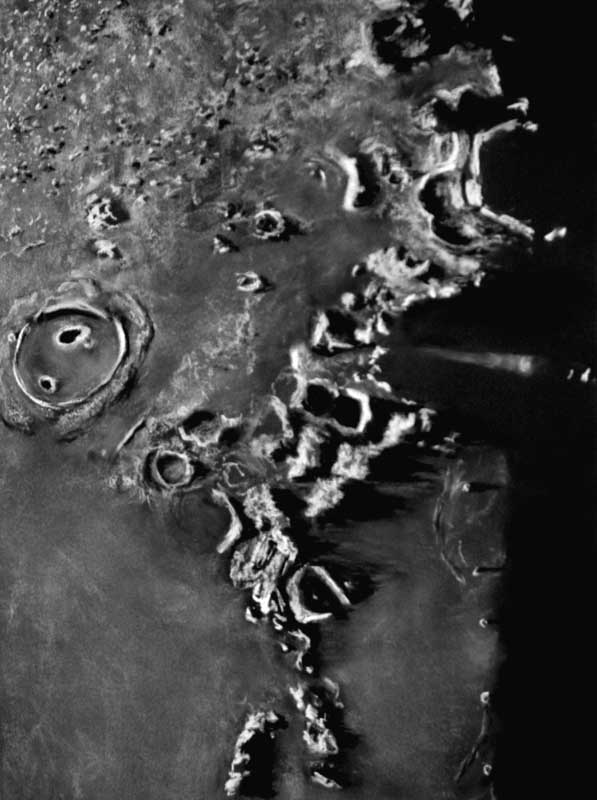
Alexander’s Waning Ray
By Richard Handy
When the waning Moon brings long spires of deep shadows to the mountains and scarps that line the western shores of Mare Imbrium, the peaks of the Montes Caucasus become beacons of bright white light, radiant and dazzling in the last rays of late lunar afternoon sun. This arcuate, rugged range, a remnant of the multi-basin rings raised by the titantic Imbrium impact, reach a lofty 6000 meters in elevation above Mare Imbrium and Serenitatis today. The strait that separates the Caucasus and the Montes Apenninus is probably the result of the previous Serenitatis impact. The collision excavated a large section of crustal material at the eventual and almost tangental intersection of these two great lunar basins, so here no mountains nor hills were lifted high enough to survive the much later inundation by mare basalts. The dark parabola of shadowed Alexander is illuminated by a single, slim dagger of light. Was this ancient Pre-Imbrium 82 km crater the result of an oblique impact? The heavy fill of ejecta from the Imbrium or Serenitatis events and the remainders of its sparse and broken ramparts make interpretation difficult, still it’s general elliptical depression begs this question. Between the Montes Caucasus and the Montes Alpes to the northeast lies Cassini with it’s smooth appearing glacis. This Lower Imbrium crater almost looks to have impacted into a semi-liquid layer of basalt, so soft and thin is the appearance of it’s glacis. To the northeast of Cassini, The Montes Alpes, a great blocky wedge composed of lineated chunks of broken regolith, is scattered radially from the center of Imbrium, evidence of the sheer power of an explosion that lifted up mountain ranges and tossed aside blocks of lunar crust the size of stadiums hundreds of kilometers from it’s center. Beyond the field of view of this sketch, the Vallis Alpes confirms the readjustment that occcured millions of years after the Imbrium event, as large sections of crust pulled apart under the stresses of sublithospheric flows.
Sketch details:
Subject: Alexander’s Waning Ray Rukl: 12, 13,
Time: 9:50 UT to 10:17 UT Date: December 30, 2007
Seeing: Antoniadi III -IV Weather: clear and 10 mph breeze
Lunation: 20.68 days
Colongitude: 164.0 deg.
Illumination: 58.9%
Lib. in Lat.: +03 deg. 30 min.
Lib. in Long.: +06 deg. 29 min.
Phase: 280.2 deg.
Telescope: 12″ Meade SCT f/10
Binoviewer: W.O. Bino-P with 1.6X nosepiece
45 deg. W.O. erect image diagonal
Eyepieces: 18mm W.O. Plossls
Magnification: 271X
Sketch Medium: White and gray pastels on Strathmore black Artagain paper
Sketch size: 18″ X 24″

There is not a pastel that doesn’t desires to be in your hand…
It is always such a pleasure to see such artistry Richard.
Everyone here has so much talent to pleasure the eye, and envy us without such a wonderful gift of art.
Heidi-Ann Kennedy
Rich,
So very much captured here; your wonderful narrative could have gone on for pages. From your eye to your mind to your hand no one could render this view better.
Frank
Thank you so much Heidi-Ann and Frank, your gracious words encourage and inspire me.
Rich
Simly…..incredible..
Peter
Peter my friend, thank you!
Rich